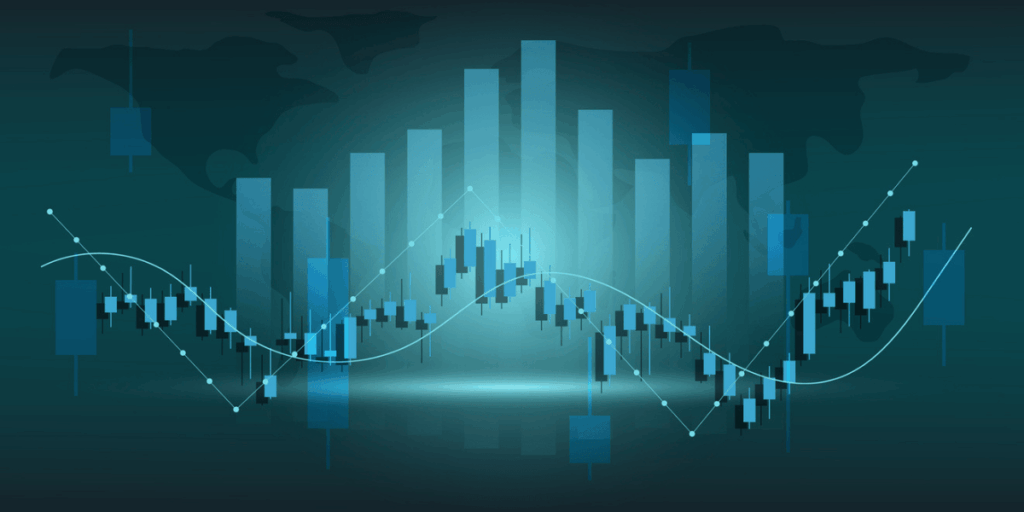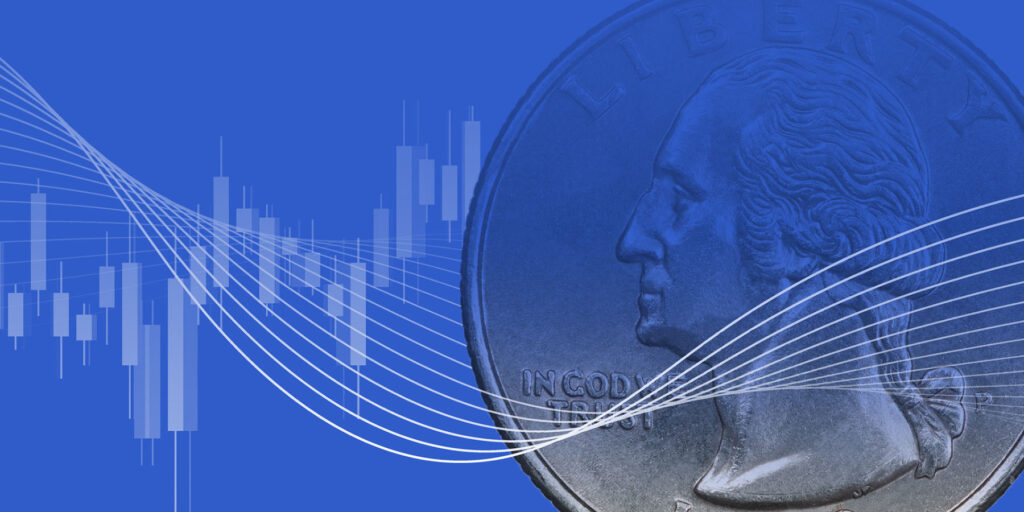For those of you who would prefer to listen:
To say the Stock Market has been resilient is a complete understatement. Investors have been hit with multiple shocks in the first half of 2025. They’ve ranged from 2 wars overseas, American bombs hitting Iran, a Chinese AI threat called DeepSeek and the April obliteration day around trade. They all created serious bouts of volatility. But none of these events have succeeded in derailing the rally. The S&P 500 is back to all-time highs. And it’s come in the face of so many pressures and uncertainty. I get this question all the time; Why is the Market up so much? The Market can be confounding. Fear is often the trigger. It’s so true what they say: “The Stock Market climbs the wall of worry.”
Of course, we never know for sure why the Market is up or down on any given day. Some days are more obvious than others. Here’s my sense of why the Market rallied this week, and recent weeks, hitting a new, all-time high:
The Market has a long track record of ignoring geopolitical risks. Deutsche Bank did an interesting study this week. What they found was that while geopolitical shocks typically lead to an approximate 6% decline for the S&P 500. What’s more, in the ensuing 3 weeks, the losses have generally been erased. This time was even quicker than that.
Overall portfolio positioning across the country and around the world has been quite defensive most of the year. The risks were perceived high around the various geopolitical threats and the April crash shook investors to the core. Equity positioning has been underweight the norm, with many anticipating a deeper sell-off ahead. In other words, the crowd was on one side of the boat. It doesn’t take much to flip it. With so many sellers having already sold, the least resistance was higher and once the rally ensued, then the chase was on. It happened in April. It happened again in June. These are emotional times. Fear and Greed. At first, it’s the fear of free-falling prices. Then when that stops, and a sustainable rally takes hold, the fear turns to missing out.
One of the biggest risks for the Market is higher Oil prices. Neither Iran nor Israel are large economic powers. But the region is key for Energy. High prices choke off growth. It takes away from spending in other areas and drives up inflation. Lower prices do the opposite. The Market likes lower Energy prices.
The US is not nearly as dependent on Oil for its Economy like it was decades ago. Alternative sources of energy are playing a much bigger role. Plus, gas vehicles are much more fuel efficient now. But equally important has been the significant increase in US production. We are no longer dependent on foreign sources. We haven’t been for a while. Thanks to the 2-decade-long shale boom, the US has become the world’s largest Oil producer. We don’t need those supplies from the Persian Gulf. That has certainly enhanced our national security. Realistically, the United States doesn’t attack the third-largest Oil producer in the Middle East if it didn’t possess an abundance of energy. It’s very significant. And the rest of the world knows it.
Even though the United States doesn’t consume as much Middle East Oil, Crude prices are still driven by the Global Market. China and India are large buyers of Mideast Oil. In fact, 90% of Iran’s exports go to China. The situation was really tense. What was remarkable was that the price of Oil did not explode higher with the American bombs launched in Iran. In fact, it was the opposite. The price immediately fell back to the levels seen just before Israel launched its offensive on June 13th. For OPEC+, the crisis revealed what could be an inconvenient truth. The days when geopolitical shocks unleashed a gusher of Petro Dollars may be over.
The Bond Market had been sending stress signals all year about the excessive U.S. debt and nagging inflation. Tariffs and the trade wars exacerbated the situation. Alarm bells were going off. Yields rise when risks rise. Usually, investors seek safety in Dollars and Treasuries. This Spring, they weren’t. They went to Japanese Yen and Gold. The Market was starting to indicate America was no longer the safe haven for money. It officially lost its AAA status.
The drop in Oil prices has soothed some of the pressure on prices. That gives the Fed more evidence to cut rates again. The Market likes that. Word that the Senate is cutting spending in the Big Bill helped too. Lower rates mean cheaper mortgages for aspiring American home buyers and reduced interest payments for government debt. Housing has been weak. America has been choking on expensive debt.
Lower Oil prices also mean spending elsewhere. High prices at the pump act like a phantom tax. They take money away from other areas in the economic system. But importantly, Oil produces far more than fuel. You might be surprised to know how pervasive Crude is in our lives. Did you know that makeup is rooted in Oil? A guy named Thomas Williams saw his sister mix petroleum jelly with coal dust and put it on her eyelashes. It was considered a good look. His sister was Mabel. He had an idea. Born in 1915 was Maybelline.
So, what’s in a barrel? First of all, there are 42 gallons in a barrel of Oil. The United States consumes, on average, 20 Million barrels every day. That’s 840 Million gallons. Roughly two-thirds of the barrel goes towards transportation. That’s gas at the pump. That’s jet fuel. That’s distillates like heating Oil and diesel. About 20% of the barrel, or 8 gallons in the barrel goes towards consumer goods. You won’t be surprised to know that paints and cleaning products are derived from Oil. Plastics are made from Oil; That’s also not a surprise. Plastics are everywhere in our lives which have significantly driven down the costs of goods. What might really surprise you is the clothes you wear, the lotion and shampoo you use, the gum you chew and those contact lenses in your eyes most likely come from Oil. The device you’re reading this on or listening to was almost certainly made from Crude. So, when the price of Oil moves, it has a direct impact in almost everything we use. I say it a lot, even in this Digital Age, the World still runs on Crude.
With war talk simmering down a bit, geopolitical focus turned back to trade. The US and China signed a deal this week, though details are few. Commerce Secretary Howard Lutnick said Beijing would deliver rare earths and the US would remove some restrictions on chips. Treasury Secretary Bessent called these latest developments a de-escalation and asserted the US doesn’t want to decouple from China. The Market reacted positively to that. Trade talks continue with other countries. Apparently, they’ve stalled with Canada though. The clock is ticking on trade. The tariff pause is slated to end in July.
Back to the Market:
Despite hitting fresh, all-time highs this week, participation has not been broad-based. Tuesday saw explosive price action at the index level, but it was dominated by Tech/AI outperformance. Despite the 1% gain on the day, nearly 75% of the S&P 500 stocks closed down. Friday saw big gains and some expanded participation, going into the weekend at record highs. With reports of several positive trade developments since April and a solid Tech-led Earnings Season, investors have flocked back to stocks. Lower Oil, leading to lower prices should lead to lower interest rates. The Market is eyeing Fed cuts again. It wants them. Looks like it might get them, perhaps in the Fall. The Market is back to pricing them back in.
Narrow leadership is worth watching. It speaks to the overall health of the Market. Despite the all-time highs, only 6% of S&P companies are at 52-week highs. Tech has dominated for years. It’s definitely where the growth is. EarningsSeason is around the corner again.As usual, earnings growth has been the key driver for stocks. Will it continue? The Street is looking for 9% earnings growth for the S&P this year and accelerate to 13.7% growth in 2026. The weak Dollar should be a strong tailwind for foreign sales, which account for roughly 40% of S&P. The Market is definitely giving the benefit of the doubt as the S&P is back to trading at 23x this year’s estimates and 21x next. Those are pretty lofty valuations, but there has been a strong track record for beating them of late. Tech is where the growth is. AI is alive and getting smarter, faster. It’s still the biggest Market driver.
We have seen a series of these V-shaped recoveries, which consist of a sharp decline, followed by a meteoric rise. The Covid crash was a prime example. The April crash, resulting in a 20% decline in just 2-weeks’ time, has been completely erased. The Stock Market is back to the levels it was in February. It’s as if nothing has happened in 2025. The resiliency has been so remarkable. Imagine if you fell asleep for 4 months and woke up to see the Dow and S&P essentially at the same place. You’d think, hmmm, seems pretty boring and uneventful; A whole lotta nothing. Well, we know for certain it’s been a whole lotta something. I hope this piece helps explain some things that can seem inexplicable.
Might I remind you; This is the 2020s. It’s a time when nothing surprises. Well, at least not for long. I’m just trying to make sense of it and anticipate what’s next. That’s a tall order, I know.
Have a nice weekend. We’ll be back, dark and early on Monday.
Mike






